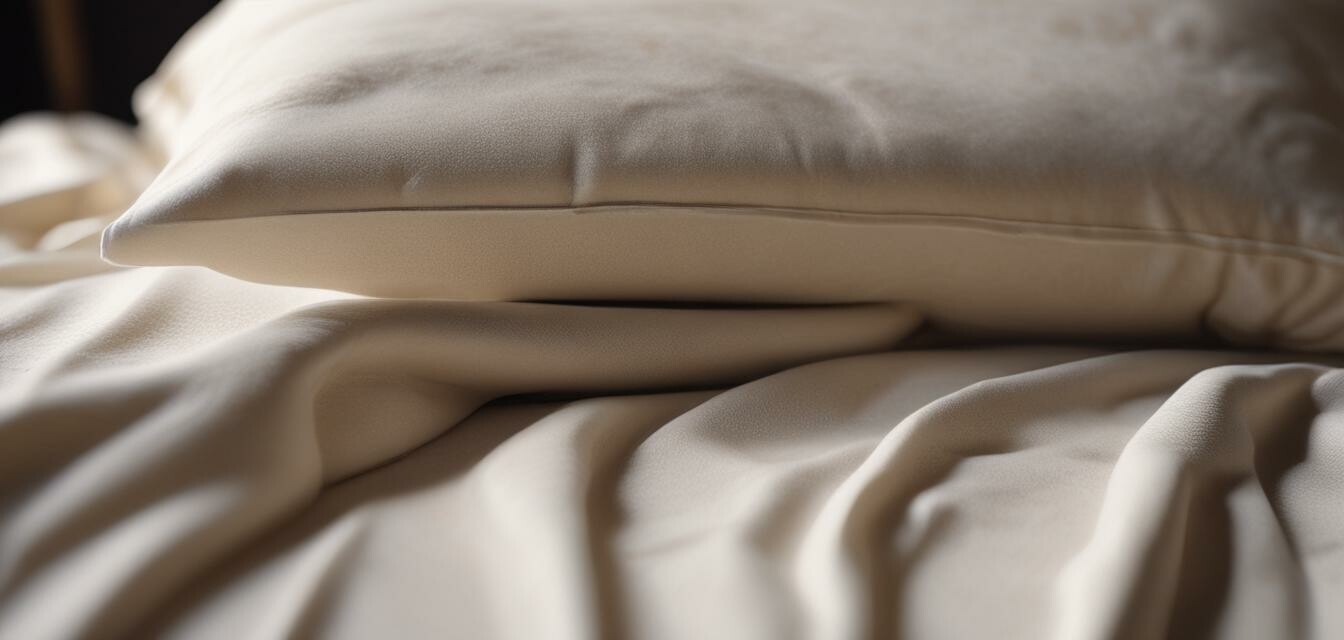
Comparing Bamboo and Traditional Bedding Materials
Key Takeaways
- Bamboo bedding is often more sustainable compared to traditional materials.
- Bamboo sheets are usually softer and more breathable than cotton sheets.
- Both bamboo and traditional bedding can provide comfort, but they differ in care and durability.
- Understanding your priorities can help you choose between bamboo and traditional bedding options.
Choosing the right bedding is essential for a good night's sleep and overall comfort. With many options available, it's crucial to understand what sets various materials apart. This article will delve into the comparison between bamboo and traditional bedding materials, focusing on comfort, sustainability, and health benefits. We will examine how bamboo sheets stack up against cotton sheets and provide you with the information needed to make an informed decision.
Comfort Comparison
When it comes to comfort, bamboo and traditional materials like cotton and linen each have their unique features:
| Material | Softness | Breathability | Temperature Regulation |
|---|---|---|---|
| Bamboo | Ultra-soft and smooth | Highly breathable | Naturally temperature-regulating |
| Cotton | Soft (varies by type) | Good breathability | Moderate temperature regulation |
| Linen | Textured and crisp | Breathable | Retains heat better |
Bamboo bedsheets are known for their ultra-soft texture, making them a favorite among many. They provide excellent airflow, which can help keep you comfortable during sleep. In contrast, cotton sheets, while soft, can vary significantly in feel depending on the weave and thread count. Linen can be more textured, which some might not find as comfortable.
Sustainability Matters
Another crucial factor to consider when choosing bedding is the sustainability of the materials. Here’s how bamboo stacks up against cotton and other traditional options:
| Material | Growth Rate | Water Usage | Biodegradability |
|---|---|---|---|
| Bamboo | Fast-growing | Low | Highly biodegradable |
| Cotton | Slow-growing | High | Biodegradable |
| Linen | Moderate growth | Moderate | Biodegradable |
Bamboo is one of the most sustainable bedding materials available. It grows quickly without the need for pesticides and requires much less water compared to cotton production. Cotton’s conventional farming practices often lead to heavy water usage and can involve harmful chemicals. Linen is considered a more sustainable choice than cotton but still doesn't reach the sustainability levels of bamboo.
Health Benefits of Bamboo Bedding
Aside from comfort and sustainability, bedding materials can impact health and wellness. Let's explore the potential advantages of bamboo and traditional materials:
- Bamboo: Naturally hypoallergenic, resistant to dust mites and mold.
- Cotton: Can irritate sensitive skin unless treated properly.
- Linen: Breathable but may harbor more dust due to its texture.
Bamboo bedding is often preferred for its hypoallergenic properties. Those suffering from allergies may find it beneficial to switch to bamboo sheets, as they resist common allergens. Cotton can be treated to minimize skin irritation, while linen's texture may not provide the same level of protection against dust and allergens.
Bamboo sheets vs. Cotton sheets
When pitting bamboo sheets directly against cotton, here are some aspects to consider:
| Attribute | Bamboo Sheets | Cotton Sheets |
|---|---|---|
| Softness | Very soft and smooth | Varies (but generally soft) |
| Durability | Long-lasting | Can wear out over time |
| Care Instructions | Easier to care for | May require special washing |
| Price | Generally higher | Varies widely |
Overall, bamboo sheets tend to offer more luxury in feel and health benefits, but they can have a higher price point than cotton sheets. Cotton, on the other hand, is widely available and typically offers a range of prices.
Making the Right Choice for Your Bedroom
Ultimately, the choice between bamboo and traditional bedding materials boils down to personal preferences and priorities. Here are factors to consider:
- Consider your budget: Bamboo bedding may be more expensive, but it can be worth the investment for long-term benefits.
- Evaluate your comfort preferences: If you prioritize softness, you might prefer bamboo.
- Think about sustainability: If eco-friendliness is important to you, bamboo is a great choice.
- Allergies and skin sensitivities: If you have sensitivities, bamboo's hypoallergenic properties may benefit you.
Conclusion
In summary, both bamboo and traditional bedding materials have their strengths and weaknesses. Bamboo bedding stands out with its comfort, sustainability, and health benefits, making it an attractive option for those looking to upgrade their sleep experience. On the other hand, traditional materials like cotton and linen can also offer great comfort and have a long-standing availability. Ultimately, understanding your needs and preferences will lead you to the best choice for your bedroom.
Pros of Bamboo Bedding
- Super soft and luxurious feel.
- Highly breathable and temperature-regulating.
- Eco-friendly and sustainable material.
- Resists dust mites and allergens.
Cons of Bamboo Bedding
- Typically more expensive than traditional options.
- Limited availability in some areas.
For more information on choosing the perfect bamboo bedding, check out our Bamboo Bedding Buying Guides.
Explore different options by visiting our product categories for Bamboo Sheets, Bamboo Blankets, and Bamboo Comforters.